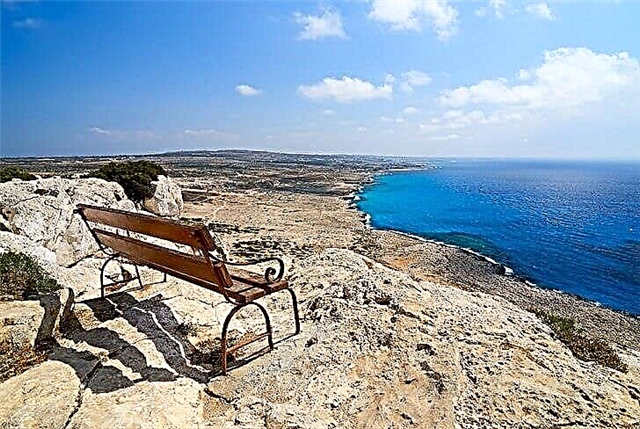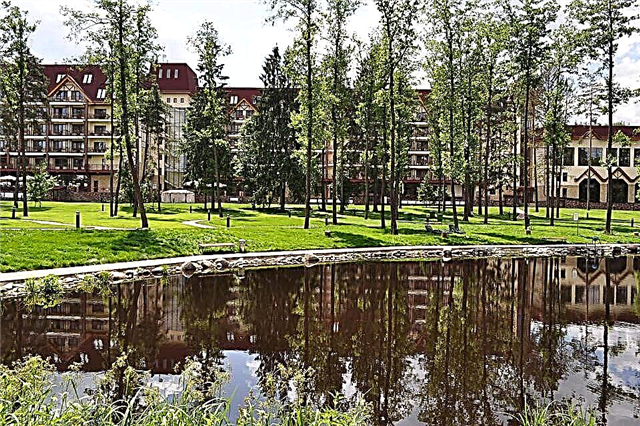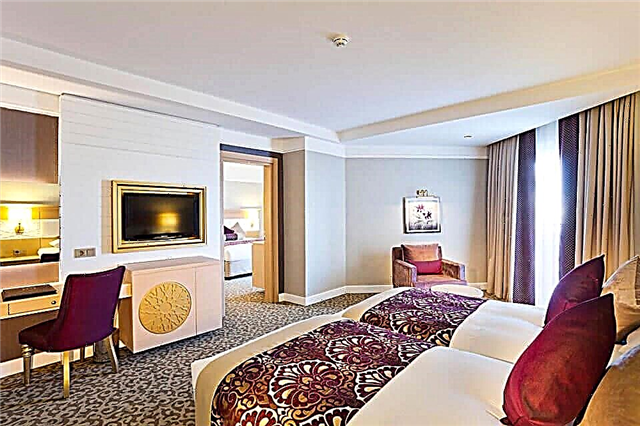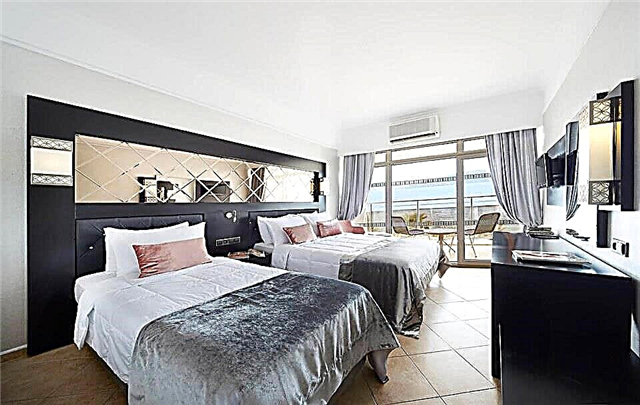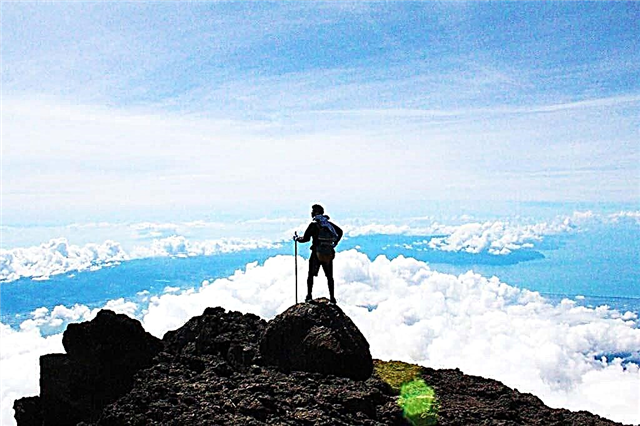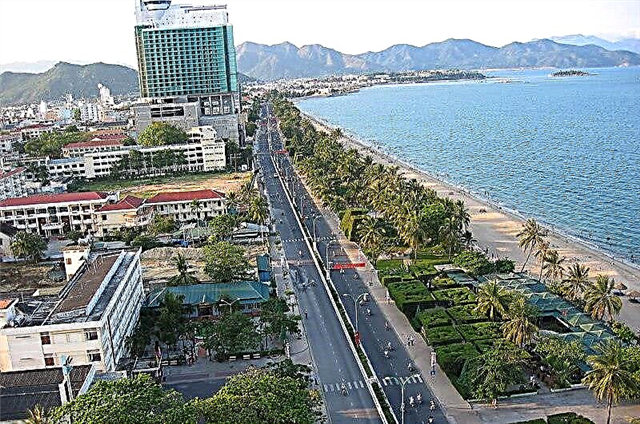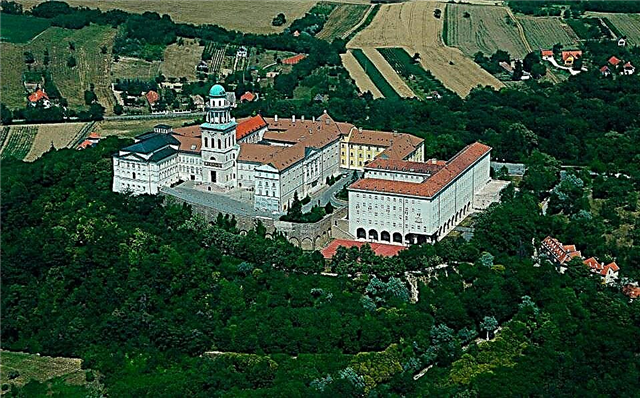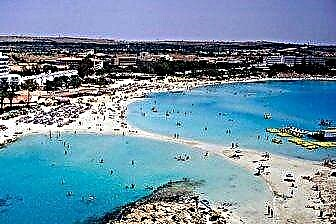Cyprus is one of the most sought after and popular beach destinations. On this wonderful island, the sun shines more than 300 days a year, the swimming season lasts almost six months from May to October. The tourist industry of Cyprus is fully and comprehensively developed - guests are invited to stay in luxury 5 * hotels on the first coastline, in more democratic 4 * and 3 * or economical apartments.
Cyprus resorts are suitable for all types of travelers. Young people's digging prefers stylish and energetic Ayia Napa, where after the day's sunbathing you can “rock” in the nightclubs. Larnaca or Limassol are more preferable for families with children - the hotels of these cities have excellent animation and entertainment for the little ones. Quiet and romantic Protaras is an excellent choice for people looking for a secluded and relaxing holiday.
Tourists from all over the world mainly visit the southern part of the island - the very state of Cyprus itself. The northern part of the island is considered to be occupied by Turkish troops, but you can also get there and enjoy the picturesque mountain views or swim in the clear Mediterranean Sea.

The best hotels and hotels at affordable prices.
from 500 rubles / day
What to see in Cyprus?
The most interesting and beautiful places, photos and a short description.
Tombs of the Kings in Paphos
A small necropolis near Paphos. Despite the name, there are no tombs of kings here, only the burials of the local nobility. Long before the discovery by archaeologists, these places were plundered by "treasure seekers"; only the outer walls of the buildings have survived to this day. The graves date back to the 4th-3rd centuries. BC.

Archbishop's Palace
Construction of the XX century. in a pseudo-Venetian style in the capital of Cyprus Nicosia. Nearby there is an old building of the 18th century palace, which was badly damaged after the invasion of the Turks in 1974. This place serves as the residence of the head of the local church - the Archbishop of Cyprus. The palace has a museum, library, art gallery and cathedral.

Bath of Aphrodite
A small secluded grotto surrounded by lush vegetation and flowers. According to legend, the goddess Aphrodite took baths here and met her beloved Adonis. It is believed that the water from the baths rejuvenates the body, gives strength and vigor. But visitors are not allowed to swim in the grotto, so it is impossible to check this version.

Winery KEO
It is located in one of the centers of local winemaking - the city of Limassol. Wine has been made in Cyprus for thousands of years; KEO vineyards have been producing crops for over 150 years. During a free tour of the factory, tourists are told about the history and production process of different types of wine. The tasting is also free, after which you are offered to buy your favorite drinks.

Limassol castle
Fort of the Ottoman period, built in the 4th century. In the 16th century it was used by the Turks to guard the harbor of Limassol. In the early periods on the site of the fort there was a Christian basilica and a Byzantine fortress, where, according to legend, the wedding of King Richard the Lionheart to Princess Berengaria took place.

Paphos fortress
A laconic and austere building from the time of Alexander the Great. The fortress was part of a defensive system, the lower floors were used as a prison. Only parts of the ancient fort have survived to this day, since the structure has been repeatedly destroyed over the centuries.

Kolossi Castle
The construction of the period of the powerful medieval orders of knighthood. The castle tower is an example of military architecture of the 12th century. Not only the thick walls of the castle have been perfectly preserved, but also some elements of the interior decoration - drawings and frescoes depicting divine scenes. The building was used by the knightly orders as a military-strategic facility.

Kyrenia Castle (North Cyprus)
It was built by the Byzantines to defend against Arab raids. The castle was renovated during the Venetian rule. In the 16th century, it fell under the blows of the Ottoman army and was used by the Turks as a military base until the 19th century. In 1974, after the occupation of Northern Cyprus by Turkish troops, a museum was placed in the castle.

Buffavento Castle (North Cyprus)
It is located in the Cyrene mountains at an altitude of almost one kilometer. The building has an Italian name, translated it means "protection from the wind." The castle was built in the 11th century and was used as a prison for dangerous criminals. During the reign of the Venetians, it was not used, so the buildings fell into disrepair.

The ghost town of Varosha (Northern Cyprus)
Once the city of Varosha was the best resort in Cyprus, visited by Brigitte Bardot and Elizabeth Taylor. After the 1974 Turkish invasion, residents were evacuated. The districts under construction were surrounded by a fence and armed guards were posted. The empty concrete boxes of the hotels look eerie against the backdrop of sunny beaches and the sea, where people continue to relax.

The ancient city of Kourion
In the XII century BC. was one of the major Cypriot cities. In the IV century BC. it was destroyed by an earthquake, but many structures have survived to this day. Not only the facades of the buildings have survived, but also the Roman mosaics depicting animals. The city amphitheater of Kourion is a fine example of ancient antique architecture.

Ancient city of Amathus
One of ten Cypriot city-states that existed dozens of centuries ago. Located near Limassol. Only the ruins of squares, public baths, and administrative buildings have survived to this day. According to mythology, Amathus was founded by the father of Adonis. In ancient times, the cult of Aphrodite dominated here.

Kykkos monastery
An important center of Orthodoxy in Cyprus. It is the richest monastery on the island, located in the picturesque Troodos mountains. There is an icon of the Mother of God, which has miraculous powers (according to Christian beliefs). Moreover, the holiness of the image dazzles the beholder so much that in 1975 the icon was dressed in a silver setting.

Church of Saint Lazarus
An ancient Christian temple built by Emperor Leo IV the Wise at the burial place of Lazarus, a friend and companion of Christ. The church was the cultural, social and religious center of Larnaca. During the Venetian occupation of Cyprus, the temple belonged to the Roman Church, it housed a Benedictine monastery.

Ayia Napa monastery
Monastery of Our Lady of Napa, with the foundation of which two legends are associated. According to the first, an icon of the Mother of God was found in the cave at the site of the construction, the second tells about a noble Venetian woman who, in spite of her parents, became a nun and took refuge in a cave on the site of a monastery.

Monastery Stavrovouni
It is located on the top of a mountain 40 kilometers from Larnaca. It is considered the oldest monastery in Cyprus. Since its foundation, the monastery has gone through several periods of poverty and armed invasions, but now its former power and grandeur have been fully restored, the monastery is flourishing. An important Christian relic is kept in Stavrovouni - part of the cross on which Jesus was crucified.

Selimiye Mosque in Nicosia (North Cyprus)
The main mosque of Northern Cyprus, a wonderful example of Cypriot architecture. The building was built for 150 years, at different times it was a small church, a Gothic temple, Hagia Sophia, and after that it was a mosque. The design clearly shows a mixture of architectural styles from different eras and cultures, which gives the mosque a unique value.

Catacombs of Saint Solomon
One of the main shrines of Cyprus. According to Christian legends, the Great Martyr Solomonia, who fled from Palestine, died here. She, along with her sons, hid from the persecution of King Antiochus IV, but was discovered. All seven sons of Solomon were martyred, their mother died while praying over their bodies.

Settlement of Khirokitia
An ancient settlement of the Neolithic era (7-6 thousand years BC), a UNESCO heritage site. Despite the impressive age of 9000 years, the ruins of Khirokitia are well preserved, which allows archaeologists to draw conclusions about a distant era based on the objects found there. It is still unknown where this settlement originated and where people later disappeared from it.

Kamares Aqueduct
An 18th century plumbing supplying water to Larnaca. The structure consists of 75 stone arches, reaches 25 meters in height and stretches for several tens of kilometers. The aqueduct functioned until 1930. After the laying of modern water supply systems, it turned into a historically significant architectural monument.

Forty Columns Castle
Ruins of an ancient structure of the 7th century, which was used for defense against Arab raids. It was originally built on forty columns, hence its name. The castle was almost completely destroyed by an earthquake, only some towers and catacombs of interest to researchers have survived.

Famagusta gate
Located in the center of Nicosia. The gate is part of the Venetian fortifications. They were created in the 16th century and protected the settlement from Turkish attacks. After the 1980 restoration, the gate halls were used as a venue for lectures and conferences, and concerts are often held in the 35-meter corridor due to excellent acoustics.

Buyuk Khan Caravan Saray (Northern Cyprus)
One of the most striking sights of Nicosia. The building appeared under the Ottoman Turks in the 16th century and was used for its intended purpose until the arrival of British troops. The British set up a prison and a shelter for the poor here. After the 90s. XX century as a result of a large-scale reconstruction of the caravanserai turned into an arts center.

Avagas gorge
Located on the Laona plateau. It is a picturesque cliff surrounded by green vegetation and pink flowers. A great place for hiking, admiring nature and exploring the Cypriot flora. There is an interesting cave in the gorge, opened in 2003 and practically inaccessible due to a very narrow entrance.

Fig Three Bay
An attractive place in the resort town of Protaras, where a picturesque comfortable beach is located. There are always enough tourists in the bay, as it is located in a beautiful place where the azure water of the Mediterranean Sea merges with the sky, and the purest sand sparkles in the rays of the bright sun.

Petra tou Romiou bay
It is considered one of the most beautiful and romantic places in the Mediterranean. According to legend, it was here that the goddess Aphrodite emerged from the sea foam. The white cliffs and the piercing blue sea of the bay create a picturesque contrast that pleases the eye. Newlyweds and couples in love like to hold photo sessions here.

Larnaca Salt Lake
A body of water consisting of four interconnected salt lakes. The total area is just over 2 km². This place is unique in that wild ducks, gulls, flamingos, cormorants periodically nest here in large numbers. A recreation area with gazebos, benches and equipped picnic areas has been created around the lake.

Aquapark "Aphrodite" in Paphos
A large area with a variety of slides, swimming pools, numerous water activities. The water park also has a children's playground with replica slides for the youngest visitors. On the territory there are recreation areas and restaurants where you can take a breath in the shade of exotic trees.

Nissi Beach
The most famous beach in Ayia Napa. Life is constantly boiling here - DJs play and foam discos take place. Tourists perform relaxed dances and relax in luxurious restaurants against the backdrop of white sand and blue sea. The place is not for lovers of solitude, but it is very suitable for cheerful and noisy companies.

Cape Greco
A picturesque place popular with divers, romantics and wilderness lovers. The best time at Cape Greco is evening, when the evening sun sets into the sea. Many tourists come to admire this spectacle and take photographs for memory. The cape is located between the popular Cypriot resorts of Protaras and Ayia Napa.
